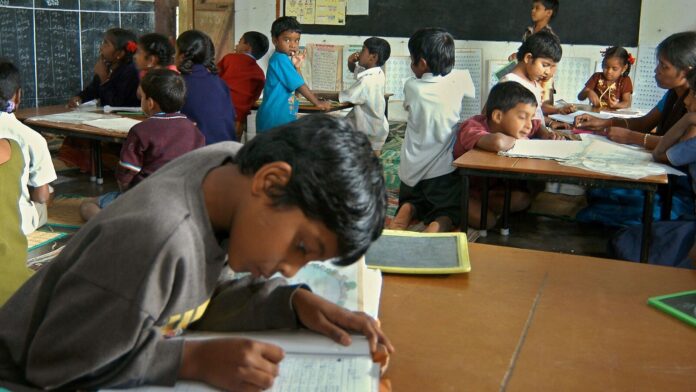This column on primary education is the second in a series on the quantity-to-quality (QtoQ) transformation that India requires to deliver on its developed-country aspiration.
If only one column could be written about the need for a QtoQ transformation, it would be about the need to ensure that learning outcomes at appropriate levels in India’s primary school system are met.
Primary school learning outcomes for reading, writing and arithmetic (the 3Rs) are the foundational elements for the developmental progress of any nation. Academic research has clearly shown that one of the primary drivers of the ‘East Asian Miracle’ in the 70s and 80s was continuous investment in human capital.
Basic education, health and nutrition, and family planning services were provided in these countries to promote inclusiveness as well as increase labour productivity. This foundation, combined with macro-economic stability, led to an environment of high savings, significant investment and an overall increase in prosperity among East Asian nations.
For the last two decades, the social service organization Pratham Educational Foundation, through its Annual Survey of Education Report (ASER), has been assessing the basic reading and arithmetic levels of children aged 5-16 in India. This survey on the basics of learning is conducted every two years.
In alternate years, a different lens is used to evaluate other age cohorts and aspects of learning. This systematic and rigorous approach allows us to evaluate progress in children’s learning both over the years (longitudinally) and across select parameters in the same year (cross-sectionally).
The latest ASER basics report from 2022 shows a remarkable 99% of eligible children aged eight-and-above enrolled in school. It also shows that 57% of students in Grade V are unable to read Grade II-level text. Distressingly, this reading proficiency outcome has not changed in a decade.
Similarly for numeracy, 75% of students in Grade V and 55% of students in Grade VIII cannot perform an elementary division operation. Over the last decade, there has been little change in the number of students in Grade III who can subtract (approximately 25%).
Since independence, we have done a reasonable job of technical higher education. Even though the penetration of technical higher education has been limited, its quality has matched the best in the world, resulting in a cadre of technically qualified, globally employable Indians—witness the number of Indian-origin Fortune 500 CEOs.
That same focus and outcome quality has been missing for mainstream primary education.
Unicef says that “primary education forms the bedrock of development. It is in primary school that children learn foundational skills that prepare them for life, work and active citizenship. Quality education empowers children and young people, safeguards their health and well-being, and breaks cycles of poverty.
It also empowers countries, ushering in economic prosperity and social cohesion.” Even as India revs up its engine on outcomes on the 3Rs, the next generation of children will need digital literacy and life-long learning tools to be successful.
A critical factor in ensuring the quality of education in primary school for a child is the educational level and interest of parents, particularly the mother. Academic studies show that maternal literacy is a key factor in learning outcomes for young children.
Nobel Laureate Michael Kremer speaks of improving school infrastructure, providing additional learning materials, changing pedagogy, improving teacher selection and aligning teacher incentives as cost-effective in-school interventions that can improve learning outcomes.
Rukmini Banerji of Pratham adds that the literature on inter-generational transmission of human capital shows that more literate mothers make decisions that improve their children’s learning. The direct policy implication of this research is that investing in the education of today’s children, particularly girls, should have positive spillovers on their children in the decades ahead.
In the current generation, adult literacy campaigns are not only useful for adults, they also have the collateral benefit of improving the quality of school outcomes for children.
Academic studies and experience from other countries with vastly varied systems provide incontrovertible evidence that the quality of education is a critical ingredient in a country’s progress. Scholars Hanushek and Kimko (2000) in a highly cited paper conclude that labour force quality has a consistent, stable and strong relationship with economic growth.
Though it is only advisory in nature, the National Education Policy (NEP 2020) sets the right tone for this quality transformation. Tangible, goal-based progress on the 3Rs and digital literacy among primary school children is an imperative for India as it seeks developed-country status.
It is this foundational capital that will create opportunities to make good use of the financial capital from our savings pool.
P.S: “Education’s purpose is to replace an empty mind with an open one,” said Malcolm Forbes.
#Education #national #development #handinhand #India #emerges
